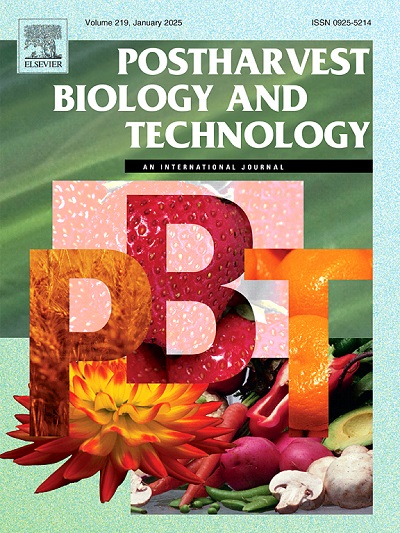Development of sorting and grading methodology of jujubes using hyperspectral image data
IF 6.4
1区 农林科学
Q1 AGRONOMY
引用次数: 0
Abstract
Using results obtained from hyperspectral image (HSI) data and pixel-wise classification model directly for jujube sorting and grading is challenging because misclassifications due to outliers and edge effects could lead to incorrect judgments. Moreover, not all jujube defects pose an equal hazard or cause the specific jujube to be rejected from the sorting line. The market can still accept jujubes with defects not related to food safety. In addition, the classification results of the stem end region of jujube should be specially treated for different markets. In this study, a methodology using hyperspectral imaging data for the sorting and grading of jujubes was investigated. The tasks involved the development of procedures to remove misclassification caused by the curvature effect and outliers, to identify the stem end region of jujube, and to make the sorting (keep/reject) and grading judgments of the jujube under investigation for the target markets. The findings demonstrate that an algorithm utilizing aspect ratios and locations of the defect components in the defect maps can effectively identify and remove misclassification due to the curvature effect, the YOLOv8n-seg model can well identify the stem end regions, and using morphological operations to remove defect components that have fewer than 10 pixels can properly remove the salt-and-pepper defect outliers. The accuracy of the jujube sorting procedure used to remove defective jujubes is 91.78 %, based on the results of 210 jujube samples. The intact jujubes or jujubes with only russet defects were graded to three levels based on the amount of russet area and shape irregularity. A jujube with russet pixels less than 8000 and an irregular shape index less than 0.07 is considered Premium-grade.
求助全文
约1分钟内获得全文
求助全文
来源期刊

Postharvest Biology and Technology
农林科学-农艺学
CiteScore
12.00
自引率
11.40%
发文量
309
审稿时长
38 days
期刊介绍:
The journal is devoted exclusively to the publication of original papers, review articles and frontiers articles on biological and technological postharvest research. This includes the areas of postharvest storage, treatments and underpinning mechanisms, quality evaluation, packaging, handling and distribution of fresh horticultural crops including fruit, vegetables, flowers and nuts, but excluding grains, seeds and forages.
Papers reporting novel insights from fundamental and interdisciplinary research will be particularly encouraged. These disciplines include systems biology, bioinformatics, entomology, plant physiology, plant pathology, (bio)chemistry, engineering, modelling, and technologies for nondestructive testing.
Manuscripts on fresh food crops that will be further processed after postharvest storage, or on food processes beyond refrigeration, packaging and minimal processing will not be considered.
 求助内容:
求助内容: 应助结果提醒方式:
应助结果提醒方式:


